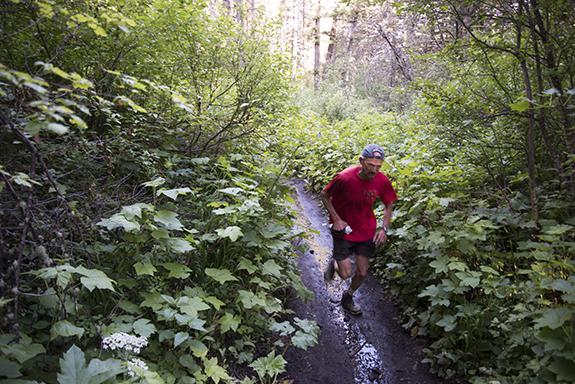Spring Break
Making the seasonal transition.
The worst of winter has subsided, and it’s time for runners to get trailblazing. What could be more exciting than the start of spring, when the roads are clear, temperatures are rising, and the once-frozen paths are calling your name? Nothing… except that you’re feeling sluggish, it snowed unexpectedly last week, and the extra padding you’re carrying around from Grandma’s triple-fudge chocolate-chunk Christmas cookies make it impossible to squeeze into the snazzy new running shorts you bought last fall.
Even more, it’s painfully obvious by now that the brilliantly plotted New Year’s fitness resolutions you made have spectacularly failed. I’m not big on resolutions, but my plan was to run eight miles, five times a week. As a two-time marathoner, that was supposed to be a piece of cake. With the burn of 26.2 still fresh in mind, eight miles sounded cute and beginner-like. However, I quickly found that even though I was a disciplined runner in the summer and fall, I couldn’t shake a certain wintertime funk. In the frosty air, both my lungs and motivation froze. I ended up eating the leftover New Year’s desserts instead.
But now the snow has cleared, the sun is peeking out, and the staggering conflict of interest—staying inside or going for a run—no longer holds as a valid excuse. If you’re having a tough time getting motivated for the transition from winter to spring training, I propose a Spring Fling Resolution as a second-chance pursuit of fitness. And yes, it’s not a tropical paradise outside yet, but are you an athlete or what? Here are a few ideas to start you on your way.
Start slowly. The transition from winter to spring outdoor activity is difficult enough for an out-of-condition body, so don’t take on more than you can handle. Start with a moderate pace goal and low mileage. No matter how long ago your last run was, begin with that same distance or (much) less. If trail running is your thing, make sure your ankle and leg strength is equal to the difficulty of the trails you’re running.
Set reasonable goals. To get and stay motivated, set your sights on personal records or competitive races that are within your endurance and fitness range. By signing up for races that are a couple of months away, you can jumpstart your running regimen, even if you haven’t hit the trails in months. Plus, the training programs that will prepare you for races encourage discipline and mental strength, and the occasionally hefty registration fees might give some added incentive to get running as well.
Run with friends. Because the allure of a warm, cozy bed is especially enticing on chilly, spring mornings, translate that comfortable environment into an enjoyable conversation with a good friend as you run. If none of your friends are runners, consider joining a running group.
Change it up. Even if you’re a dedicated runner, cross-training is a great way to condition different muscle groups, break up the monotony of repetitive routines, and reduce the risk of injury. Incorporating a variety of activities will not only rejuvenate a sluggish body, it will give extra momentum to your new springtime goals.
The Trail to the Triathlon
Dan Heil, an MSU exercise physiology professor, and Tony Brendgard, owner of Fleet Feet Sports, formed a triathlon team last year with the goal of serving as a local resource for triathletes of all levels. Dozens of people have joined the list to find training partners, share training and race information, and travel together to regional races.
Heil credits his wife, Cheri Juergens, with rekindling his interest in triathlons after she competed in sprint triathlons in 2003 and 2004. He says he does them “because of the complexity of trying to master three completely different sports linked by two very chaotic transitions.”
The team comprises an equal split of men and women from college through middle age and older. Heil says about half the members have less than two years of experience; the other half have been training and racing for three to ten years or more. No pace goals or formal training times are set for the team, although the group talks frequently on the listserv about local and regional race opportunities in the form of sprint (less than two hours to complete) or international distances (1.5k swim, 40k bike, 10k run).
“Local interest in triathlons seems to have exploded over the previous five years,” Heil says, citing the growing number of local athletes training for the half Ironman and full Ironman (2.4-mile swim, 112-mile bike, 26.2-mile run). The Bozeman area hosts several triathlons of varying lengths every summer. To learn more check out outsidebozeman.com/events.
—Savannah Barnes











